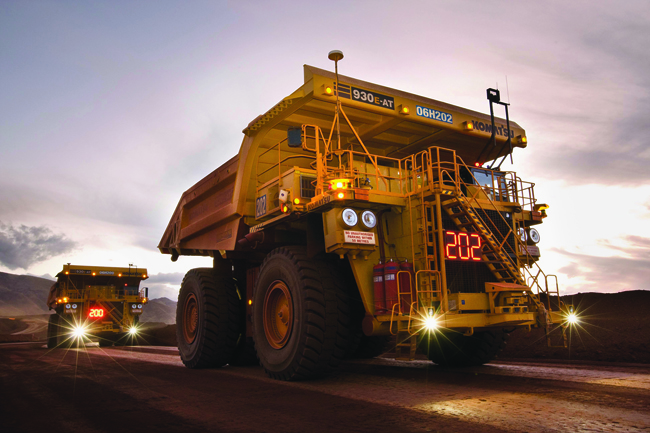
“Of course it’s devastating to the economy; especially in smaller communities.”
Driverless trucks. No, it’s not futurism or science fiction. It’s new technology being tested right now in the tar sands in northern Alberta and Teamsters Local 213 members are being urged to get ready for more turbulent times.
Tony Santavenere, Local 213’s construction division assistant, has been watching the developments at the Suncor Energy Inc. operation in Fort McMurray. About 800 Unifor rock-truck drivers are watching the company test a new fully automated vehicle that is designed to put them out of work.
According to the CBC Radio program Day 6, Suncor signed a five-year deal with Komatsu, a Japanese heavy equipment manufacturing firm, to buy 175 of these driverless trucks and they plan to automate the entire fleet by 2020.
Santavenere is certain that if these new vehicles do well in the testing stage, the drivers at the site will be laid off shortly after. He worries that Teamsters Local 213 members, who operate the same types of vehicles at mining and construction operations across B.C., could face a similar fate.
“Technology can be great; but it can also be pretty scary,” he said. “It’s used to undermine workers’ living standards by undermining their jobs. The impact on us could be huge. Between 300 and 400 of our members operate construction rock trucks.”
The loss of decent-paying and stable union jobs affects consumer spending which drives economies and leads to a downward spiral with more job losses and local business closures.
“Of course it’s devastating to the economy; especially in smaller communities (where rock-truck work often takes place),” he said. “The loss of these types of jobs means less money in stores, in movies and restaurants, for vacations and hotels. You name it.”
The new driverless trucks look like the standard vehicles, up to 30 meters long with wheel spans at least 4 meters. However, instead of a driver seat, the cab is loaded with road sensors and computer processors operated remotely. Company spokespeople say that since the trucks haul ore from the pit along a single route to a processing facility and then return, it is fairly simple to program them to operate without a driver, while removing the safety risk of human error—a claim that drivers disagree with.
“They (driverless rock-truck designers) have yet to deal with the diverse elements like changing weather conditions and differing types of ground and roads,” Santavenere said, adding that there is no way yet to substitute a driver making numerous decisions and judgment calls, often in split seconds under quickly changing conditions. “The technology to deal with this is at least five to ten years off.”
He said this time lag may give Teamsters Local 213 the opportunity to develop a strategy to address and adapt to the issue, including re-training members whose jobs may be affected and transition strategies to get members into new trades in the industry they work in now.
In Australia, Rio Tinto recently introduced automated rock trucks at its two iron ore open-pit mines in western Australia.
“Our autonomous fleet outperforms the named fleet by an average of 12%, primarily by eliminating required breaks, absenteeism and shift changes,” Andrew Harding, the firm’s iron ore chief executive, told the Australian Financial Times. “Innovation and technology is critical in our efforts to improve safety.”
Yet there are reports of minor accidents and disruptions in operations due to equipment failure.
Meanwhile, in Vancouver, Santavenere is working with the Longshoremen’s Union because it is also concerned about the introduction of automated trucks to move freight at the new Delta Port expansion. Labour and industry have suggested governments look into regulatory and transition programs to help workers and communities deal with the negative consequences of this new technology, but Santavenere is skeptical that much will be done.
“It depends on what governments are asked or are able to do,” he said. “Does the government have the capability to tell major corporations how to run their operations? In some ways it can, but in others (like technological change), it may not be very effective. It’s a constant challenge with new technology. We (unions) are constantly having to adapt.”
